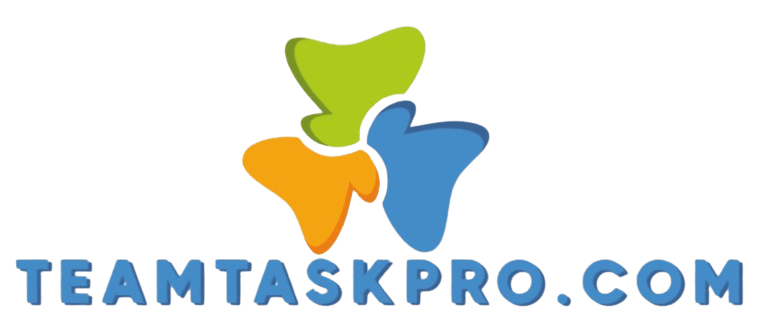how to measure project success effectively
In today s fast-paced business landscape, understanding what makes a project successful is vital for any organization.
This article dives into the essential components of project success, highlighting key metrics such as time, cost, quality, and stakeholder satisfaction. You ll discover effective tools and techniques for measuring success, navigate common challenges, and uncover best practices to ensure your projects achieve their objectives.
Whether you re a seasoned project manager or just starting your journey, this guide will give you the insights necessary to measure success with precision.
Contents
Key Takeaways:

Define project goals before measuring success.
Use a combination of key metrics such as time, cost, quality, and stakeholder satisfaction to accurately measure success.
Regularly track and evaluate project progress using project management software and surveys to identify challenges and make necessary adjustments.
Defining Project Success
Defining project success requires a clear understanding of the many factors that shape effective project management throughout its lifecycle. A successful project involves meeting objectives while also ensuring satisfaction for both clients and team members.
This includes establishing clear success criteria, implementing solid evaluation processes, and using the right project management methods to achieve desired results. To measure project success effectively, consider both quantitative and qualitative metrics that capture the complete performance spectrum and the fulfillment of project goals.
What Constitutes a Successful Project?
A successful project meets or exceeds its defined objectives while ensuring high satisfaction levels for both clients and team members throughout the project lifecycle.
To achieve this, establish clear project objectives from the beginning. This roadmap aligns everyone s efforts seamlessly.
Effective communication strategies are equally important. They facilitate ongoing dialogue among team members and stakeholders, fostering a collaborative environment.
By actively engaging stakeholders, you ensure their needs are recognized and addressed, striking a vital balance between client expectations and team capabilities.
These elements not only enhance the overall effectiveness of project evaluation but also contribute to the broader success criteria that define project excellence in today s competitive landscape.
Key Metrics for Measuring Project Success

Key metrics for measuring project success are essential for understanding the effectiveness of your project management practices and the achievement of your project goals.
Often known as Key Performance Indicators (KPIs), which are measurable values that demonstrate how effectively a company is achieving key business objectives, these metrics enable you to evaluate various aspects of project outcomes, including time management, cost efficiency, and quality of deliverables.
By utilizing these performance metrics throughout the project lifecycle, you gain valuable insights into areas that need continuous improvement and effective risk management.
Time, Cost, and Quality
When measuring project success, the trio of time, cost, and quality forms the foundational framework guiding you and your team in evaluating overall performance against established metrics.
This framework sets clear expectations and fosters accountability among team members, ensuring everyone aligns with the project s goals.
Time management is often quantified through metrics like on-time delivery rates or milestone completion percentages. For instance, tracking whether a key deliverable was completed by its deadline directly influences the project s perceived efficiency.
Budget adherence can be assessed through variance analysis, comparing planned versus actual spending to spot any financial discrepancies.
The quality of deliverables is frequently measured using client satisfaction scores or defect rates, ensuring the final product meets or exceeds predefined standards.
By closely monitoring these metrics, you can proactively address potential issues and pave the way for successful project outcomes.
Stakeholder Satisfaction
Stakeholder satisfaction is a key indicator of project success. It reflects the perceptions of both clients and team members involved.
This vital aspect reveals how well the project’s objectives align with stakeholder expectations. It also influences future collaborations and investment choices.
To effectively measure this satisfaction, feedback surveys are critical tools. They provide insights into areas for improvement and areas of success.
By utilizing metrics such as:
- Net Promoter Score (NPS), which measures customer loyalty
- Customer Satisfaction Score (CSAT)
- Engagement Score
You can quantify satisfaction levels and grasp the sentiments driving these outcomes. These metrics connect directly to project performance, reflecting whether stakeholders feel their needs have been met and how these sentiments might influence the overall success of current and future initiatives.
Tools and Techniques for Measuring Project Success

Utilizing the right tools and techniques to measure project success is essential for effective monitoring and evaluation throughout the project lifecycle.
By leveraging project management software like Microsoft Excel, Smartsheet, or employing Agile, which focuses on flexibility and collaboration, and Waterfall, which follows a linear approach to project completion methodologies, you gain critical support for tracking performance, managing templates, and facilitating real-time data analysis.
These tools empower your project team to stay organized, adhere to the defined project scope, and deliver quality results.
Project Management Software
Project management software is critical for streamlining tracking and ensuring every facet of project management is handled with precision. This includes everything from initial planning to final closure.
Microsoft Word helps document project plans clearly, while Microsoft Excel excels in managing resources through detailed spreadsheets for budgeting and scheduling.
Smartsheet brings powerful visual aids into the mix, enabling real-time progress tracking. This helps your team adapt to changes and allocate resources effectively.
By leveraging these diverse project management software solutions, you can significantly boost productivity and drive your project toward outstanding success!
Surveys and Feedback
Surveys and feedback mechanisms serve as invaluable tools to extract meaningful insights from both clients and project team members. These are essential for evaluating projects effectively.
Conducting a variety of surveys like client surveys that capture opinions on the services provided and team surveys that evaluate internal dynamics significantly enhances stakeholder engagement.
Client surveys offer a direct communication line, giving clients the power to express their thoughts on project deliverables and their overall satisfaction. Concurrently, team surveys help you gauge collaboration, morale, and areas needing improvement within the project group.
By skillfully leveraging these feedback processes, you can gain a comprehensive understanding of stakeholder perspectives. This ultimately guides the necessary adjustments that lead to improved project outcomes and stronger relationships.
Challenges in Measuring Project Success

Measuring project success comes with many challenges. These can hinder your ability to evaluate and track effectively.
You might encounter common obstacles such as ambiguity in defining success criteria, insufficient data collection methods, and a disconnect between project performance metrics and stakeholder expectations.
To navigate these challenges successfully, it’s essential to adopt a systematic approach. This involves establishing clear evaluation processes and implementing robust tracking mechanisms throughout the entire project lifecycle.
Common Obstacles and How to Overcome Them
Are you struggling to measure your project’s success? Common obstacles may include unclear ways to measure performance, lack of stakeholder engagement, and insufficient resources for thorough evaluation.
These challenges often arise from poor planning and communication, leading to misaligned goals and expectations. If you don t define ways to measure performance clearly from the start, your team members may pull in different directions, resulting in frustration and inefficiency.
When stakeholders aren’t actively engaged, you risk missing out on valuable insights and support, which can critically undermine your project’s trajectory. To tackle these issues head-on, establish clear and specific ways to measure performance from the beginning, and make it a habit to review them regularly.
Fostering open communication encourages greater stakeholder involvement, ensuring their perspectives are valued and integrated. Moreover, prioritizing adequate resource allocation for ongoing project evaluation is crucial, as it gives your team the power to make informed adjustments and cultivates a culture of continuous improvement.
Best Practices for Effective Project Success Measurement
Implementing best practices for measuring project success is crucial for ensuring that your projects achieve their defined goals and deliver high-quality outcomes. By establishing clear goals and objectives from the very beginning, you lay the groundwork for meaningful evaluation processes and consistent tracking throughout the project lifecycle.
Regular evaluations empower your project teams to remain aligned with those objectives and cultivate a culture of continuous improvement that enhances overall performance.
Establishing Clear Goals and Objectives
Establishing clear goals and objectives is a fundamental step in your project planning, which significantly impacts project success and outcome measurement accuracy. When you prioritize clear objectives, you effectively create a roadmap that guides your team through each project phase, ensuring alignment and focus.
For example, implementing the SMART criteria specific, measurable, achievable, relevant, and time-bound can greatly enhance clarity. Engaging in techniques like brainstorming sessions and stakeholder interviews allows you to gather diverse perspectives, ensuring your project goals are comprehensive and well-informed.
By aligning these goals with clearly defined success criteria, you can more effectively assess progress, make necessary adjustments, and achieve exceptional outcomes.
Regular Tracking and Evaluation
Regularly tracking and evaluating project performance metrics is essential for assessing progress and ensuring alignment with desired outcomes and objectives. By utilizing an array of tools and techniques think Gantt charts, performance dashboards, and agile methodologies you can streamline this entire process.
These instruments allow for real-time monitoring of tasks and deliverables, while promoting transparent communication among your team members. Incorporating metrics like Key Performance Indicators (KPIs) enables you to identify potential bottlenecks early, giving you the opportunity to make timely adjustments.
Continuous evaluation paves the way for systematic improvements, enhancing both the effectiveness of your project and the measurement of its overall success. Maintaining a proactive approach to tracking fosters a culture of accountability and innovation, vital for achieving the results you seek.






